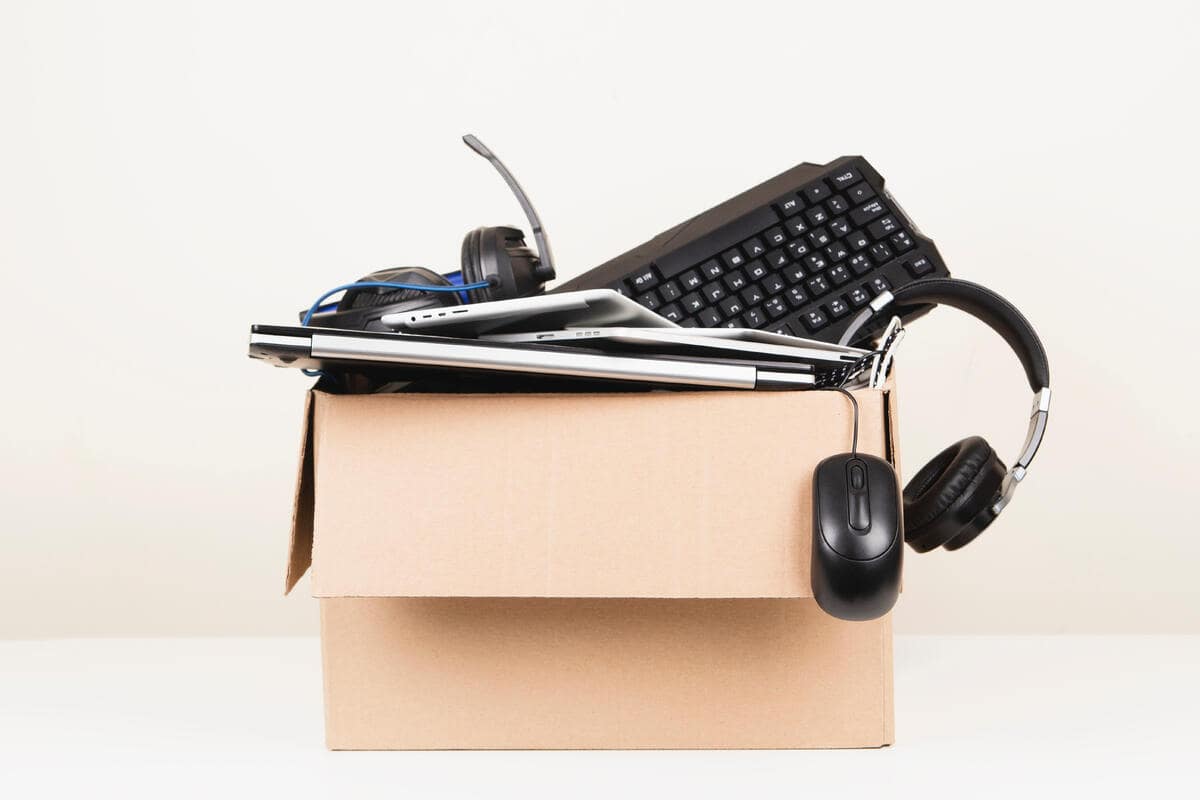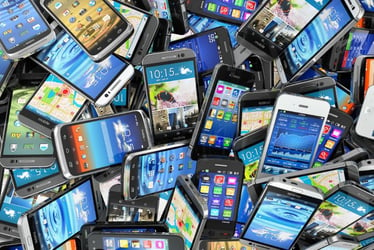As the holidays draw closer and closer, deals offered on tech equipment can be nearly irresistible. Not to mention all of the new products released during the excitement of the season. Unfortunately, this time of year also ends up being wasteful and costly. Tons of working devices are tossed into the trash to keep up with the latest releases on the market.
On an organizational level, deals can be incredibly useful. We find that on average, employee laptops are refreshed every three years, and desktops every five years. With refurbished technology, keeping your workforce up to date with their devices does not have to be a complex, expensive, nor wasteful process.
While a circular economy can prevent both monetary and environmental waste, there are still a lot of stigmas surrounding buying refurbished tech. Thanks to modern advancements in the secondary market, these myths don’t have any place in decision-making when it comes to buying devices.
5 Myths about Refurbished Technology
1. Refurbished devices are lower quality
There are many reasons products end up on the secondary market that have nothing to do with the quality of the device. An excess inventory, looking for different features, a change in consumer needs, the release of a newer model – all popular reasons under which tech devices are offered up for a secondary use.
In the event of that a device is sent in with an issue, preparations for its release onto the secondary market will always include repairs and reconditioning to a like-new state.
Buying refurbished devices from a trusted partner, like Ingram Micro Lifecycle, ensures the preservation of both its value and functionality. We abide by strict guidelines and procedures when preparing devices for their secondary use, guaranteeing they hit the secondary market with the highest possible quality.
2. Refurbished devices won't last as long as a new device
Consider how often new versions of devices are released. Currently, consumers can expect a brand-new version of their device every year – it can also be expected that the current version will be rendered obsolete shortly thereafter.
With harmful manufacturing processes such as planned obsolescence, buying new is not synonymous with buying quality. In essence, a device that can make it to the secondary market was indeed built to last – buying it refurbished won’t change that.
Additionally, the perks that usually come along with buying new, such as extensive customer support and warranties, are becoming more widely available with refurbished products. Many qualified refurbishers offer warranties on their products that are on par with new product warranties – including numerous repair options for consumer convenience.
These refurbishers also have a rigorous metric by which they assess devices intended for secondary use, rerouting any without sufficient quality or endurance to be recycled. Through the thorough processes Ingram Micro Lifecycle employs, devices we refurbish are made to last – functioning at their peak and enabling a circular economy.
3. It's easier and simpler to buy new
On average, over 80% of a device’s carbon footprint occurs within its manufacturing process. New devices tend to require new everything, including the mining of new metals and the creation of new materials and plastic. For instance, upwards of 190,000 liters of water are required to extract and process the materials needed to manufacture one new laptop.
These steep environmental costs can be significantly reduced simply by opting to buy refurbished. The secondary market is flooded with different device options through a large variety of resellers. As a buyer, no amount of choice has to be lost when you buy refurbished.
With all the advancements within secondary marketplace operations, shopping refurbished is as seamless as shopping new. Ingram Micro Lifecycle utilizes Renugo, our global B2B auction marketplace for the refurbished devices we sell. The Renugo marketplace brings together bulk buyers and sellers for a diverse inventory at affordable prices.
The widespread accessibility of this marketplace encourages fair competition, ensuring convenient and affordable refurbished options across the field. The process of buying refurbished has been so streamlined, it’s giving the convenience of “buying new” a run for its literal money.
4. A refurbished device can't or won't suit my needs
Your devices need to function to their fullest capacity to keep you and your organization productive and successful. While it may seem like your only option is to buy new devices, you might find more flexibility and efficient customization in buying from the secondary market, not to mention the monetary savings.
Through an experienced partner, a refurbished device can fulfill your organization’s needs at a fraction of the environmental and monetary cost.
For example, Ingram Micro Lifecycle fully refurbishes, repairs (if necessary), prepares, and customizes a device for any secondary use you need. We can also execute these processes on devices you already have, bringing technology in your asset inventory up-to-speed, sparing you from even needing to buy.
Through our trusted processes, refurbished devices can be equally weighted against a new device, for a cheaper cost and greener solution.
5. Refurbished devices and used devices are the same
It is true that both used devices and refurbished devices both had previous owners, however, that’s where the similarities end. To be formally considered “refurbished” a device will undergo thorough testing and verification, as well as any necessary repairs, data wiping, and cosmetic fixes.
Used devices, however, can be sold by anyone, under any condition including those less savory, leaving your company open to data security risks and tech-related difficulties.
Refurbished devices need to pass through a much more meticulous process. Ingram Micro Lifecycle measures any device intended for secondary use against a rigorous metric. Only when the device clears all of our processes do we offer it on our secondary marketplace. Through us, devices labeled "refurbished" have been brought back to a like-new state.
Beyond the Stigmas
The holiday season can bring about the most cheerful of celebrations – don’t let them be dampened by increasing holiday e-waste. You expect a lot from your fleet of devices, and it’s understandable to be wary of risks, however, the stigmas surrounding buying refurbished devices are unfounded with today’s advancements.
With a trusted partner like Ingram Micro Lifecycle, you can rest assured that refurbished technology will fulfill your expectations. By opting to buy devices refurbished, your company can help enable a circular economy and reduce the impacts of technology manufacturing and e-waste.
Looking for more information on refurbished devices?
- Switching Supply from New to Refurbished Devices
- 7 Reasons Consumers are Switching from New To Refurbished Devices
- 5 Sourcing Pitfalls to Avoid When Stocking Refurbished Electronics
References









.jpg?width=450&height=250&name=used%20phone%20on%20conveyor%20for%20processing%20(1).jpg)

